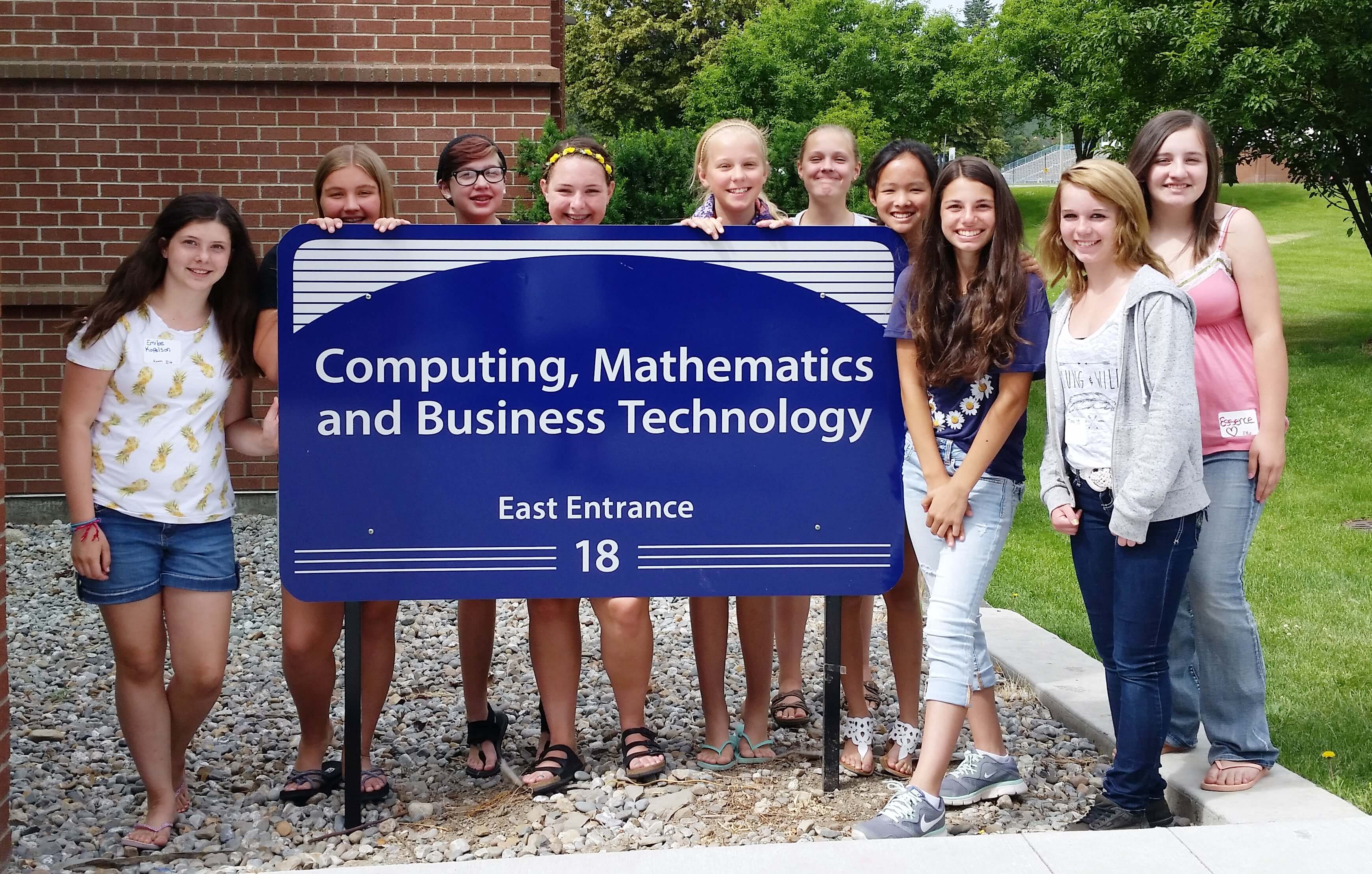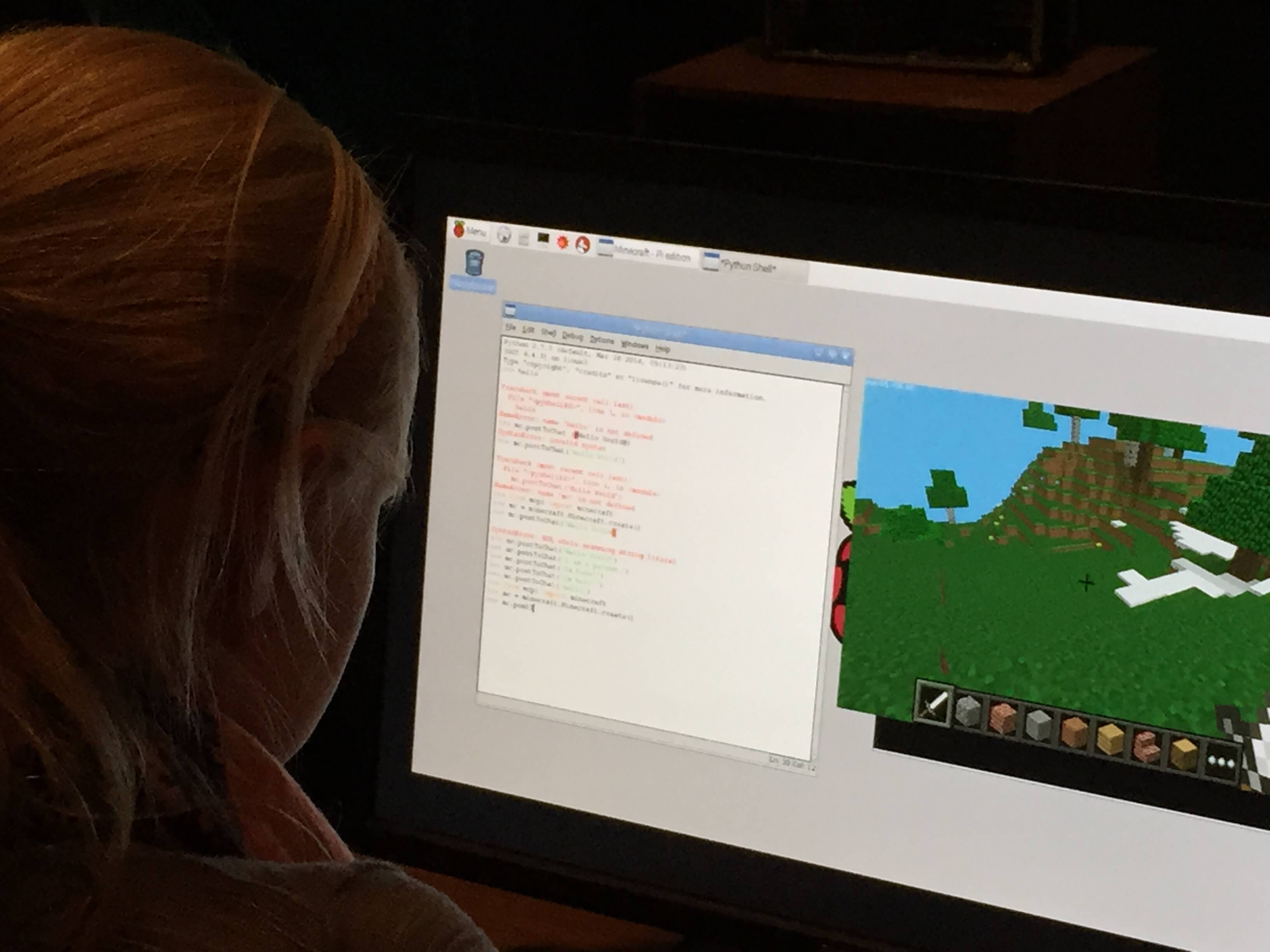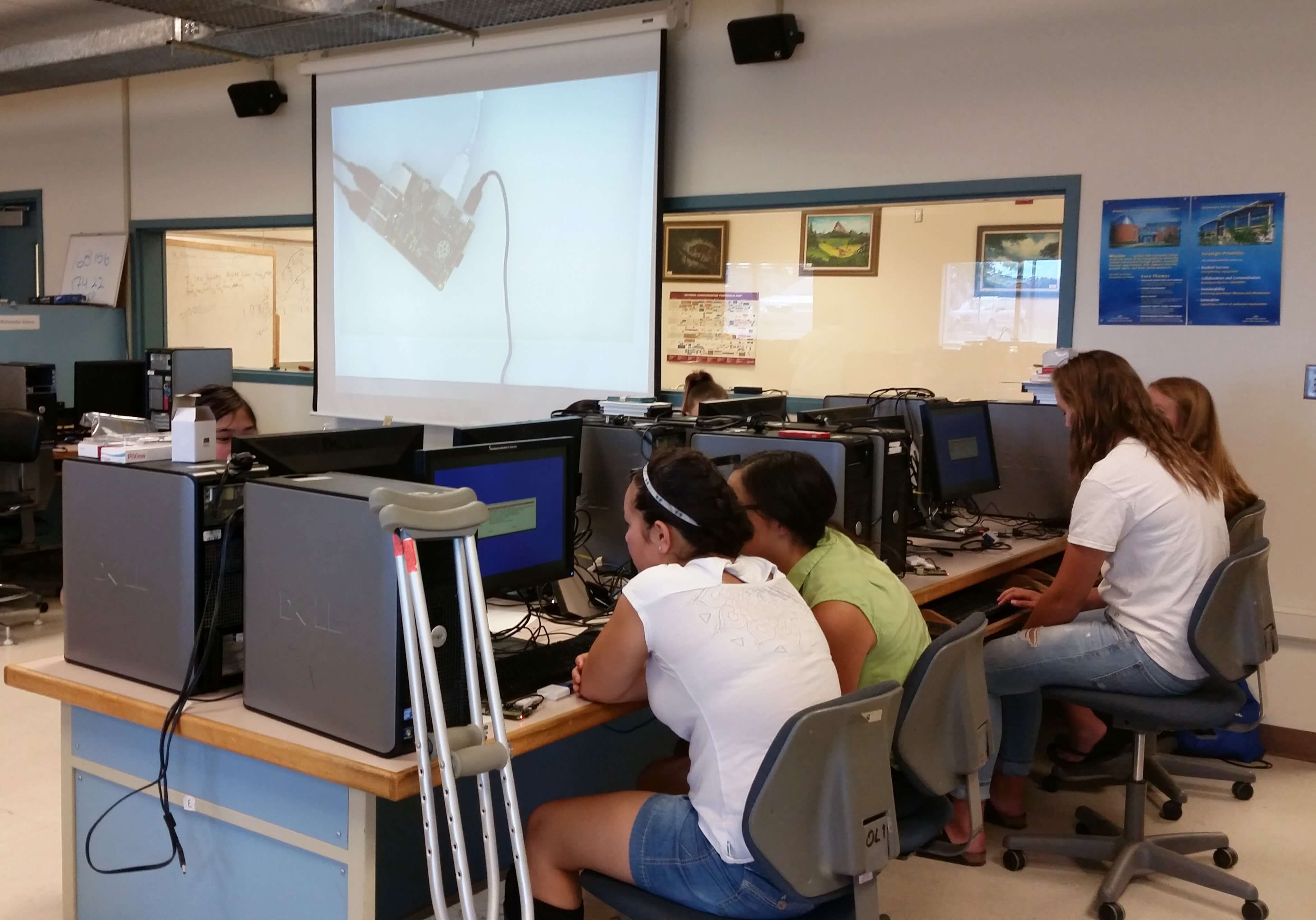Along with co-PIs Michelle Moore and Max Josquin, I am a recent recipient of an NSF ATE grant aimed at increasing female enrollment and retention in my college’s Information Systems (IS) program. Our year one activities included creating a daylong Information Technology (IT) camp for incoming eighth and ninth grade young women.
 |
 |
In our original plan, we had set aside money for five IS college students to help us for eight hours during the summer camp. We decided to meet weekly with the students during the months leading up to our event to stay on task and schedule.
1st surprise: Nine students showed up to the initial meeting, and eight of those remained with us for the project’s duration.
2nd surprise: Instead of waiting for our guidance, the students went off and did their own research and then presented a day-long curriculum that would teach hardware, software, and networking by installing and configuring the popular game Minecraft on Raspberry Pi microcomputers.

3rd surprise: When asked to think about marketing, the students showed us a logo and a flyer that they had already designed. They wanted T-shirts with the new logo for each of the campers. And they wanted each camper to be able to take home their Raspberry Pi.

At this point, it was very clear to my colleagues and I that we should take a step back and let the students run the show. We helped them create lesson plans to achieve the outcomes they wanted, but they took ownership of everything else. We had to set up registration and advertising, but on the day of the camp, the students were the ones in the classroom teaching the middle-graders. My colleagues and I were the gofers who collected permission slips, got snacks ready, and picked up pizza for lunch.
Perhaps our biggest surprise came when our external evaluator, Terryll Bailey, showed us the IS college student survey results:
“96.8% of the volunteers indicated that participating as a Student Instructor increased their confidence in teamwork and leadership in the following areas:
- Taking a leadership role.
- Drive a project to completion.
- Express your point of view taking into account the complexities of a situation.
- Synthesize others’ points of view with your ideas.
- Ability to come up with creative ideas that take into account the complexities of the situation.
- Help a team move forward by articulating the merits of alternative ideas or proposals.
- Engage team members in ways that acknowledge their contributions by building on or synthesizing the contributions of others.
- Provide assistance or encouragement to team members.
All eight (100%) indicated that their confidence increased in providing assistance or encouragement to team members.”
For year two of our grant, we’re moving resources around in order to pay more students for more hours. We are partnering with community centers and middle schools to use our IS college students as mentors. We hope to formalize this such that our students can receive internship credits, which are required for their degree.
Our lessons learned during this first year of the grant include being open to change and being willing to relinquish control. We are also happy that we decided to work with an external evaluator, even though our grant is a small grant for institutions new to ATE. Because of the questions our evaluator asked, we have the data to justify moving resources around in our budget.
If you want to know more about how Terryll and I collaborated on the evaluation plan and project proposal, check out this webinar in which we discuss how to find the right external evaluator for your project: Your ATE Proposal: Got Evaluation?.
You may contact the author of this blog entry at: asa.bradley@sfcc.spokane.edu

Except where noted, all content on this website is licensed under a Creative Commons Attribution-NonCommercial-ShareAlike 4.0 International License.





 EvaluATE is supported by the National Science Foundation under grant numbers 0802245, 1204683, 1600992, and 1841783. Any opinions, findings, and conclusions or recommendations expressed on this site are those of the authors and do not necessarily reflect the views of the National Science Foundation.
EvaluATE is supported by the National Science Foundation under grant numbers 0802245, 1204683, 1600992, and 1841783. Any opinions, findings, and conclusions or recommendations expressed on this site are those of the authors and do not necessarily reflect the views of the National Science Foundation.